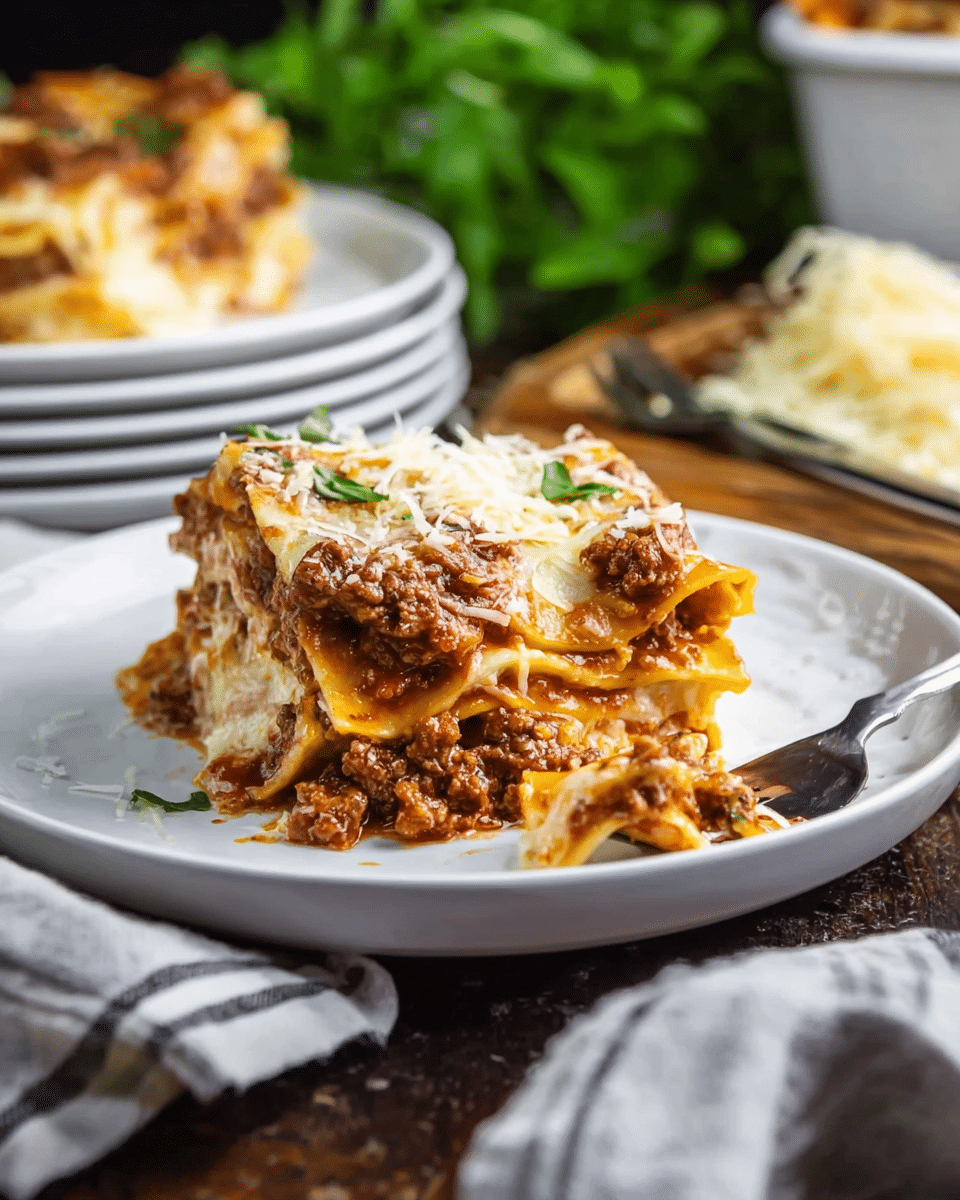The Origins and Tradition of Lasagna al Forno
Lasagna has a long and storied history in Italy, with regional variations found throughout the country. The dish is believed to have originated in Ancient Greece, where a dish called Laganon was made from layers of pasta and sauce. Over time, this dish evolved in Italy, and the Emilia-Romagna region, in particular, became known for its version, Lasagna al Forno. This traditional lasagna is distinguished by its rich, slow-cooked meat sauce, known as ragù, and the creamy béchamel sauce that is poured between the layers of pasta. In this region, the sauce is often made with a combination of beef, pork, and sometimes veal, simmered for hours to achieve a deep, savory flavor. The addition of béchamel, a classic French sauce made from butter, flour, and milk, adds a rich creaminess that binds the lasagna together. This combination of flavors and textures has made Lasagna al Forno a favorite not only in Italy but around the world.
The Hearty Meat Sauce (Ragù)
The meat sauce is the heart and soul of Lasagna al Forno. This ragù is made by slowly cooking ground beef and pork with a mixture of onions, carrots, celery, and garlic. The result is a savory, rich sauce with a depth of flavor that enhances the layers of pasta. The key to a great ragù is the time and patience required to let the flavors develop. The sauce is simmered for several hours, allowing the beef and pork to meld with the vegetables, tomatoes, and a variety of seasonings, including Italian seasoning and bay leaves. Adding red wine to the mixture also adds a layer of complexity, giving the sauce a slightly tangy, robust flavor. As the sauce simmers, the ingredients soften and blend together, creating a thick, rich texture that clings to the pasta perfectly. This ragù is not only a critical component of lasagna but also a versatile sauce that can be used in other pasta dishes, making it a valuable recipe to have in your repertoire.
The Creamy Béchamel Sauce
The béchamel sauce, a simple yet elegant creation, is what truly sets Lasagna al Forno apart from other lasagna variations. Made by cooking butter and flour together to create a roux, and then gradually whisking in milk and nutmeg, béchamel is the perfect creamy complement to the rich ragù. The addition of parmesan cheese gives the béchamel a nutty, savory flavor that enhances the overall richness of the dish. Béchamel sauce is used in a variety of classic French and Italian dishes, and in Lasagna al Forno, it helps to balance the bold flavors of the meat sauce with its smooth, creamy texture. This sauce not only provides a rich mouthfeel but also helps to bind the layers of lasagna together, ensuring that every bite is a harmonious blend of pasta, meat, and cheese.
The Pasta Layers and Construction
The pasta used in Lasagna al Forno is traditionally a fresh, wide lasagna sheet that is layered with the meat sauce and béchamel. While some versions of lasagna call for pre-cooked pasta, the oven-ready lasagna sheets used in this recipe make the process simpler and faster. These pasta sheets are designed to soften and absorb the flavors of the sauce as the lasagna bakes, creating a tender, melt-in-your-mouth texture. Each layer of pasta is carefully stacked with the ragù and béchamel sauce, followed by a generous sprinkling of parmesan cheese. This layering process is crucial to achieving the right balance of flavors and textures. The pasta sheets create a base for the rich sauce and cheese, while the béchamel adds a smooth, creamy contrast that binds the dish together.
Baking and Serving
Once assembled, the lasagna is baked in the oven to allow all the flavors to meld together. The layers of pasta, sauce, and cheese cook together, creating a golden, bubbly top that is irresistible. Baking the lasagna covered with foil ensures that the dish cooks evenly and retains moisture, while uncovering it towards the end of the cooking time allows the top to become crispy and slightly browned. For an added touch of texture, you can broil the lasagna for a minute or two at the end of baking to create a crispy, golden crust. After baking, it’s essential to let the lasagna rest for a few minutes before serving. This allows the layers to set, making it easier to slice and serve. Garnishing with fresh basil or parsley adds a pop of color and a burst of freshness, while an additional sprinkle of parmesan cheese enhances the savory flavor of the dish.
The Ultimate Comfort Food
Lasagna al Forno is the epitome of comfort food. Its layers of tender pasta, rich meat sauce, and creamy béchamel come together to create a dish that is both satisfying and indulgent. The slow-cooked ragù is full of deep, savory flavors, while the béchamel provides a smooth and creamy texture that balances the richness of the meat sauce. Each bite of lasagna is a combination of savory, creamy, and cheesy flavors that work in perfect harmony. Whether you’re enjoying a family dinner or serving guests at a special occasion, Lasagna al Forno is a dish that never fails to impress. Its combination of flavors, textures, and comforting qualities makes it a meal that everyone can enjoy.
Nutritional Considerations
While Lasagna al Forno is undoubtedly a rich and indulgent dish, it also provides a good amount of protein and nutrients. The ground beef and pork used in the ragù are excellent sources of protein, while the parmesan cheese offers a healthy dose of calcium. The béchamel sauce, though creamy, is made with whole milk, which provides additional vitamins and minerals. The inclusion of vegetables like carrots, celery, and onions in the meat sauce adds fiber and micronutrients to the dish. However, due to the richness of the ingredients, Lasagna al Forno is a higher-calorie dish, making it best suited for special occasions or when you want to indulge in a hearty, comforting meal. To balance the richness of the dish, you can pair it with a light salad or steamed vegetables for a more well-rounded meal.
Making Lasagna in Advance and Leftovers
One of the great things about Lasagna al Forno is that it can be made in advance. In fact, like many casseroles, lasagna often tastes even better the next day as the flavors have had time to meld together. You can prepare the lasagna a day ahead of time, assemble it, and refrigerate it until you’re ready to bake. This makes it an excellent option for meal prepping or for serving guests at a party or holiday gathering. If you have leftovers, Lasagna al Forno reheats beautifully. You can store it in the refrigerator for up to three days or freeze it for up to three months. To reheat, simply bake it in the oven or microwave until heated through, and you’ll have a delicious meal that tastes just as good as when it was first made.
Conclusion
In conclusion, Lasagna al Forno is a timeless Italian dish that offers layers of rich, savory flavors and textures. From the hearty meat sauce and creamy béchamel to the tender pasta sheets and melted parmesan, every bite is a celebration of classic Italian comfort food. The slow-simmered ragù and creamy béchamel make this dish stand out from other lasagna variations, providing a depth of flavor that is both satisfying and indulgent. Whether you’re cooking for a special occasion, a family dinner, or just craving a comforting meal, Lasagna al Forno is sure to become a favorite in your home. Its combination of traditional ingredients, rich flavors, and versatility makes it a dish that will never go out of style. Give this classic Italian recipe a try, and you’ll have a meal that’s sure to impress and satisfy everyone at the table.






